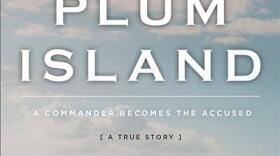Still high on the list of the world’s 100 best novels, Joseph Conrad’s haunting “Heart of Darkness” continues to fascinate, mystify, and attract adaptors. Although Francis Ford Coppola’s 1979 award-winning film “Apocalypse Now,” starring Marlon Brando is, arguably, the most imaginative of the lot—moving Conrad’s brooding and inscrutable Congo tale to Vietnam—the 1902 novella inspired earlier films (Boris Karloff as the charismatic Kurtz in 1958, John Malkovich in 1993). “Heart of Darkness” has also been turned into radio dramas, theatre pieces, even an opera. But a graphic novel, a comic book?
Why not? as illustrator and cartoonist Peter Kuper might say. He had already taken on adaptations of Franz Kafka and Upton Sinclair, and, as he says in his introduction, which he calls “The Art of Darkness,” he read a lot about the book and showed his work to scholars. He even observes a three-part structure, following the first publication of the novella as a three-part magazine series in 1889. And he thought a lot about the controversy the book ignited in 1977, when the Nigerian novelist Chinua Achebe blasted “Heart of Darkness” as “bloody racist” and insisted it be removed from school curricula.
Those defending the book have argued that Achebe unfairly blamed Conrad for the racial Darwinism and European imperialism of the day. They also say Achebe overlooked the complex and nuanced stance of the narrator, Marlow. As he sits on board The Nellie in London, telling his shipmates about the time he went upriver to find the brilliant master ivory trader, Kurtz, then gravely ill, Marlow, drawn with sharp geometrical facial lines expressing disbelief or dismay is unambiguous about the cruelty and greed of the company he worked for, and sympathetic to the Africans—chained, diseased, dying, dead. In Kuper’s adaptation, they are seen close-up in grey ink-washed panels, terrified, peering out of the steamy dark jungle.
Kuper acknowledges “the confounding and repellent” aspects of Conrad’s book—the European sense of superiority, the stereotyped Congo primitives, but he also notes a resemblance to some attitudes today. In one contemporary nod he even has Marlow signing a non-disclosure agreement with the African Trading Company. Marlow tells his tale to his shipmates on board The Nellie, one of whom, in a sly move by Kuper, resembles Conrad. Kuper also keeps to Conrad’s framing device of narration within narration, Marlow being introduced by an unidentified first person point of view, who’s obviously interested in what Marlow has to say, while another seaman groans that they’re “fated” to hear once again about Marlow’s “inconclusive experiences.” Inconclusive? The “rapacious folly,” the “fascination of the abomination,” the depravity, “the horror, the horror” as Kurtz cries out at the end, stark white letters on black?
No, this is not Joseph Conrad’s “Heart of Darkness,” with its stunning imagery and rococo sentence rhythms, even though Kuper quotes liberally from the text. But it’s a prompt to read or reread Conrad. “ More than ever,” Kuper writes, “we need art that engages with the social discourse.” Kuper is clearly more illustrator here than cartoonist, especially in the opening and closing pages of his book where swashes of white and grey-flecked brush strokes on black snake into a river, with fangs.




